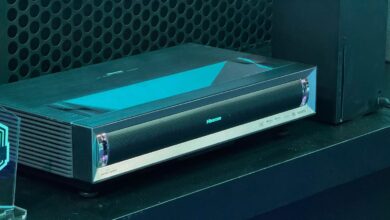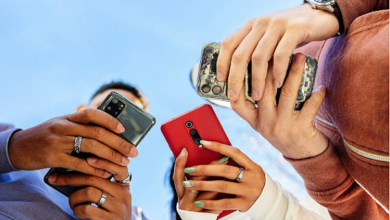From Bankruptcy To Billions: The Revival of Motorola

Motorola is one of the most important companies in history. They are responsible for the mobile phone, among many other inventions, but their success didn’t last forever. They took hit after hit. They were left with no profits, bled dry from the inside out by Google and left with none of their technology. Yet, this wasn’t the end. Motorola was down, but not out. Somehow after all of this, they did they impossible. Motorola not only survived but began to thrive. This is how.
The Legendary History
At their core, Motorola was a wireless communications company, but that’s massively underselling their long, prestigious, history. In the second World War, they made a breakthrough invention. The first portable, two-way radio: The SCR-300, which soon became known as the walkie-talkie. It was a pivotal tool for the US Army Corps, and had a range between 10 and 20 miles. But that’s just the beginning. Motorola also created, “Unified S-Band” radio, a crucial piece of equipment for the Apollo 11 moon landing mission. The radio was responsible for one of the most important video transmissions in human history. Motorola’s has a long history beyond these two examples. It’s actually unbelievable how big an impact this one company had on humanity.
Yet shockingly, these pivotal examples aren’t even what they’re known for today. In 1973 Motorola engineer Martin Cooper had just finished his latest prototype. It allowed for remote calling, anywhere. But it was fully handheld, and didn’t have cables, and didn’t have to be attached to a vehicle, and it wasn’t a radio…! Motorola had just invented the mobile phone, but this was just the prototype. It would take Motorola another full decade to bring it to the masses, and over $100 million.
But the wait was worth it. In 1983, they released the first commercial mobile phone to the world. The DynaTAC 8000x. It was bulky, needed 10 hours to charge, and only allowed for 30 minutes of talktime. But it was the first of it’s kind. It also cost $3995, or $11,800 today. Despite all of this, people were lining up to get this invention. The waitlists were in the thousands. Motorola had made a huge success, but Motorola kept working. Motorola created and dominated the mobile phone market. In the 90s, about a decade after the DynaTAC, they still had a 45% market share, and their phones continued to get smaller and better.
In the early 2000s, they had a fierce rivalry with Nokia, and soon unveiled the Razr 3. A sleek, ultra-thin flip phone, and one of the most iconic and successful phones in history. The Razr 3 sold over 130 million units. Their invention altered the world of technology. Almost everyone living today is directly impacted by this monumental invention. Which is what makes what happened next, so surprising.
The Brutal Fall
It seemed like overnight, the world of mobile phones was changed forever. The industry had been gradually moving towards “smartphones” for a little bit. But after the reveal of the iPhone, with its sleek design, app store, and full touch screen, there was no going back. So how did Motorola react? Surprisingly, Motorola were already most of the way there. Their phones, like the Razr, for the time were pretty advanced. Most competitors had a bulky appearance, but Motorola’s flagship phone was compact and sleek. They also released the Motorola Q in 2006, which was pretty close to a smartphone. Yet they were lacking something crucial. Two key elements helped the iPhone succeed: The app store, and the touchscreen.
Motorola phones had no flash interface like Apple, and very little third party apps. Plus, just by looking at the Motorola Q, you could see why it didn’t catch on. Worst of all, it was running Windows as its operating system. The traditional “dumb phone” had been most of Motorola’s business. But these were falling out of favor. Time was running out. They needed to adapt, and fast.
Competitors quickly jumped on Google’s Android as an operating system… but Motorola was hesitant. It took them until late 2009 to finally release their first “smartphone”: the Droid. It gained some popularity, and helped Motorola survive, but even then, it wasn’t really what consumers wanted. It had a touchscreen, but in reality, it was a slide phone, with a full keyboard. It used Android, as the name implies. But it wasn’t quite right. It looked closer to a mini laptop than a smartphone. In truth, The Droid only delayed the inevitable. In 2006, Motorola’s market share was 22%, but by 2009, that had fallen all the way to 6%. Keep in mind, at their peak, they controlled about half the industry. Their profits were also falling, and things were going from bad to worse.
In fact, it got so bad that in 2011 that company split in two: Motorola Solutions, the arm focused on wider telecommunications, and Motorola Mobility, the arm focused on mobile phones. It was unfortunate, but necessary. Motorola Mobility could have brought both sides down with them, so they went their separate ways. We’ll refer to Motorola Mobility as just Motorola from here. Yet, this split wasn’t even the worst thing to happen to Motorola. Their true fall was coming, and it was disguised as salvation.
Google “Saves” The Day
In 2012, Motorola, at one of their lowest points yet, was acquired by Google. The tech giant paid $12.5 billion, their biggest acquisition to date. They appointed a new CEO, Dennis Woodside, who laid out his plan: “Our aim is simple. To focus Motorola Mobility’s remarkable talent on fewer, bigger bets, and create wonderful devices that are used by people around the world.” But Motorola at this stage, was falling behind. Why would Google want a dying phone company?
Under Google’s ownership, Motorola introduced their new smartphones. The Moto X and Moto G. These were a huge leap forward, and much closer to the competition. The Moto X was their top of the line, innovative offering. It had advanced voice recognition, and a great, accessible UI. But it was pricey, at $620 which made it difficult to compete against the well established competition. Conversely, the Moto G was aimed at lower price points, but despite this it still had a great quad-core processor and used the Android OS. And at $180, it was a huge hit. Price sensitive customers loved it, and it found a fantastic niche amongst the now saturated smartphone market.
Yet, even with this success, it didn’t matter. You see, Google’s appointed CEO wasn’t entirely honest. Google didn’t care about Motorola’s phones. They wanted something else. Over the two years after their acquisition, Google began bleeding Motorola dry. Not their cash, but their patents. Motorola had thousands and thousands of patents from their long history which is exactly what Google was interested in. They slowly began transferring ownership of their patents. Taking 15,000 of Motorola’s 17,000. Then, they tossed them aside.
In January 2014, Google announced the sale of Motorola to Lenovo, for a fraction of what they bought them for. Just under $3 billion, less than a quarter of what they were worth 2 years prior. To make matters worse, Woodside, Google’s appointed CEO, saw this opportunity to jump ship to Dropbox. By this point, Motorola had next to nothing. It seemed like the end for the company.
Unexpected Revival
Motorola had invented the mobile industry itself and dominated it. Yet they lost time and time again, and soon fell behind the bigger players. Now, they had lost most of their patents they had used for most of the last century. This should have been the end for Motorola… But, somehow, it wasn’t. They were down, but not out. If they wanted to survive, even as a subsidiary, they needed to pivot. They needed a new niche they could dominate. But what? There was one man ready to revive Motorola, and set them on a new path. Sergio Buniac.
Buniac, now the president of the company, wasn’t someone appointed by Lenovo or Google. He was a 20 year veteran of Motorola. He had seen it all, their dominance, their fall, their acquisition. He was ready to put an end to this losing streak. So, what did he do? Motorola had some experience with smartphones, but their competitors had better technology, flasher phones, and better branding. Their top of the line model, the Moto X, underperformed. They couldn’t beat Samsung and the iPhone. But most of their competitors had one weakness: Price. Motorola’s price friendly model however, Moto G, had done remarkably well. Because of their history in function-based phones, they were excellent at making reliable, affordable products. This was the core of Buniac’s new strategy. Their competitors were dominating first world markets… but they were too expensive for emerging markets.
Buniac pivoted Motorola towards India and Latin America. These markets were massive and growing, but the individual buying power of customers was still low. Motorola would offer affordable, quality smartphones to these areas, with good software. They could offer better value here than their competitors, and had the potential to dominate. Buniac also knew the market very well personally. He had spent years living in Mexico, on the ground as the sales director. The question is, did it pay off?
Motorola began releasing phones in India, Latin America, and Southeast Asia. A new generation of the successful Moto G. But that’s not all, as they also released the Moto E, which was even more affordable than the Moto G. Despite their low prices, they still had fantastic technology, making them great value for money. They also came with the standard Android experience.
It wasn’t long before the strategy began to pay its dividends. Motorola soon became one of the most popular phones in these markets. They soon had over 20% market share in Latin America, with the Moto G surpassing 200 million total units sold. Yet, during all of this, something unbelievable happened. Their phones offered such good value, that they started surging in popularity in the United States itself. Not enough to overtake Apple or Samsung, but enough to become the third largest smartphone brand, holding an impressive 10% market share.
Motorola was back. Buniac and the team had done the impossible, they had emerged from ruin, and found themselves back on top. Grand Payoff Everyone who knew about Motorola’s fall expected the company to die. They were just another sad story of a historic company falling behind. But they didn’t die. After receiving blow after blow, losing market share, their patents and technologies, they still came back. It shows that what matters most of all, is strategy and leadership. If you hit the right niche, and offer the right value, you can succeed, even against giants.
Motorola Mobile is now thriving, and simultaneously, their sibling company: Motorola Solutions is also doing well as a completely different company. Motorola looks extremely different than they did 20 years ago, but internally, their resolve and grit are stronger than ever and that’s saying a lot given their nearly 100-year history.
In case you have found a mistake in the text, please send a message to the author by selecting the mistake and pressing Ctrl-Enter.
https://techplanet.today/storage/posts/2024/12/26/PaJISiRpLxSvXXKc42Y9FPCrr1jrXCLqSgZu6hez.jpg
2024-12-26 05:10:24




